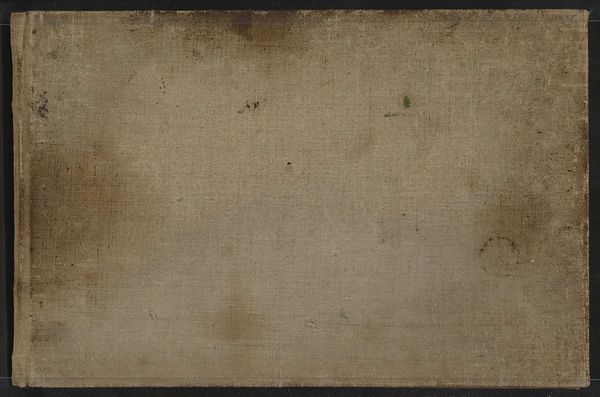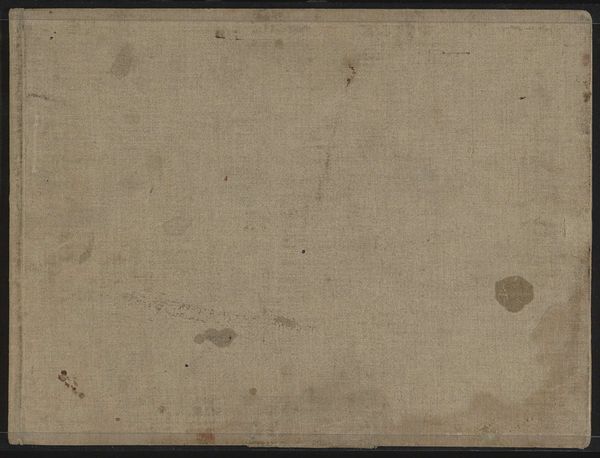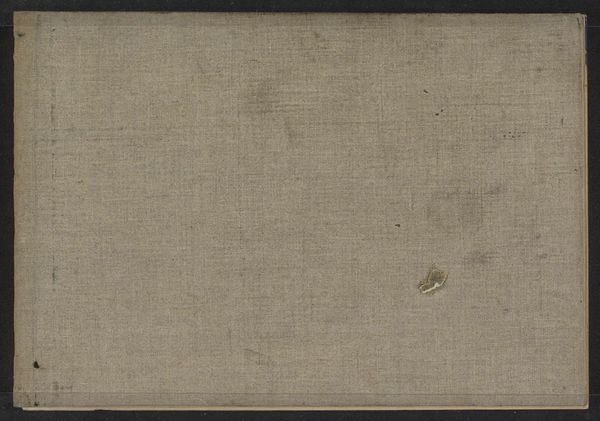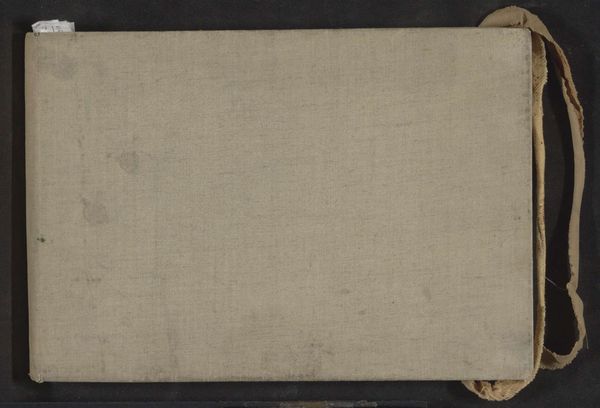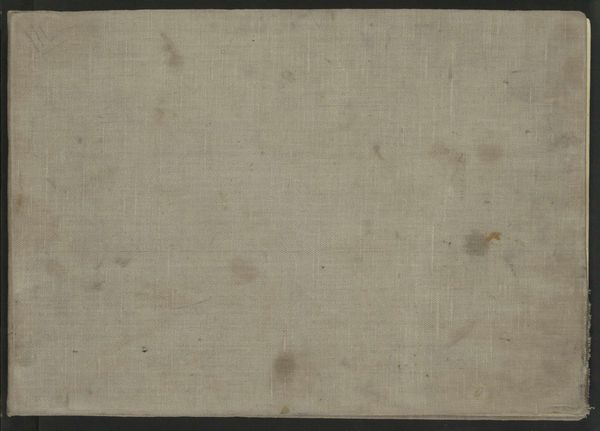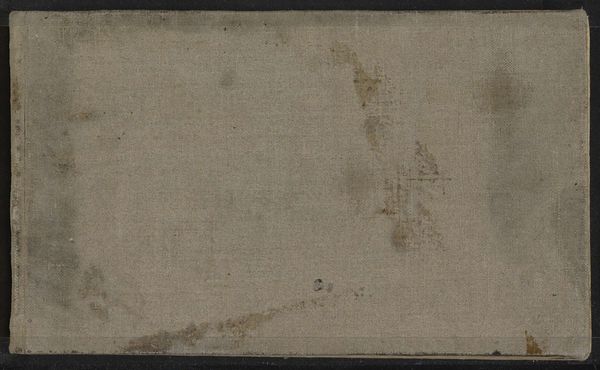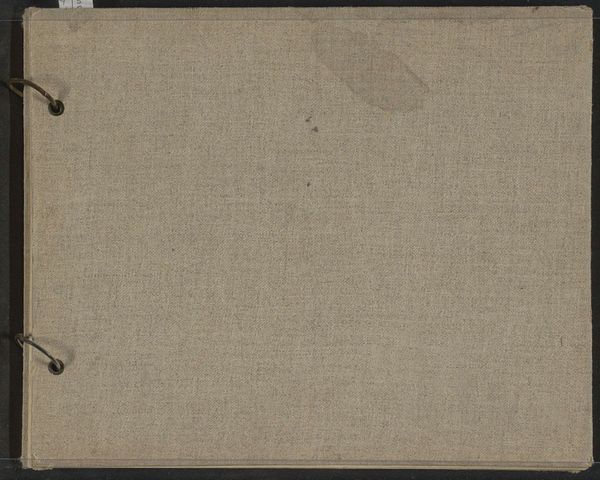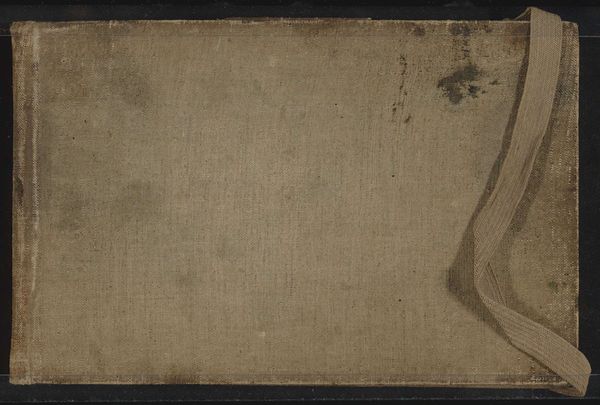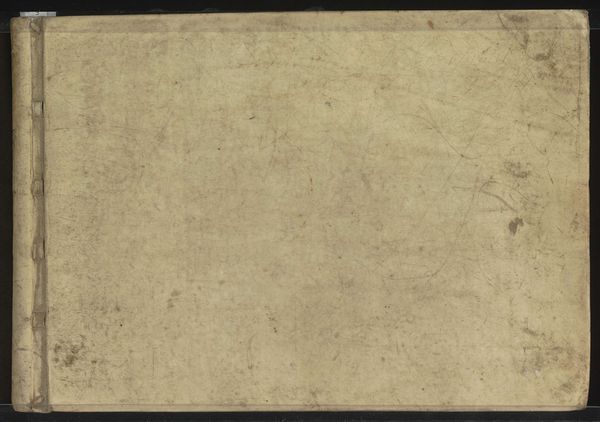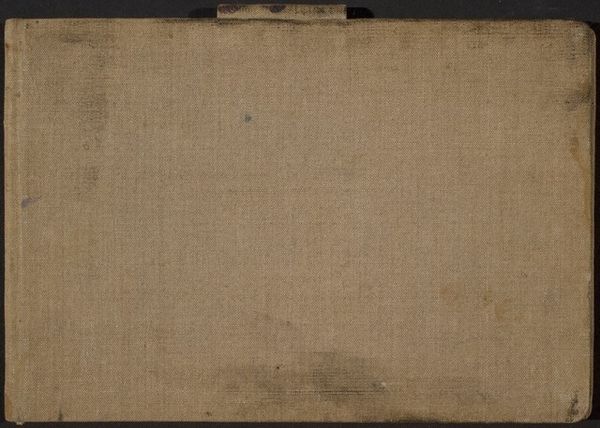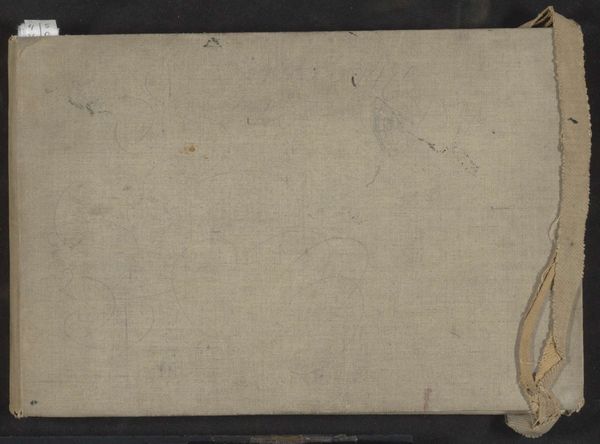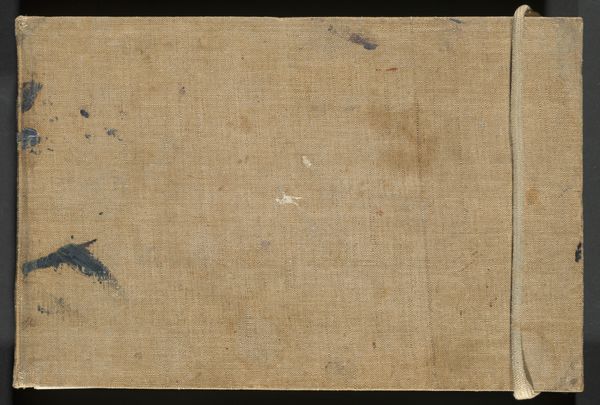
Dimensions: height 114 mm, width 204 mm, thickness 12 mm, width 410 mm
Copyright: Rijks Museum: Open Domain
Curator: Here we have "Sketchbook with 39 Pages" by George Hendrik Breitner, a Dutch artist associated with the Impressionist movement. This particular piece, dating from approximately 1886 to 1923, is currently housed right here at the Rijksmuseum. Editor: My initial impression is one of intimacy, oddly. The well-worn cover makes me think about all the unseen thoughts it carries, and how we gain access to them. There's a weight to that. Curator: Absolutely. It's fascinating to consider the role of the sketchbook in an artist’s practice. It acts as a repository of ideas, a portable space for capturing fleeting moments, and a site of experimentation. Editor: Speaking of moments, what societal currents were flowing during this sketchbook’s period of use? Breitner spanned late 19th and early 20th centuries, from industrialisation's gritty realism to the burgeoning avant-garde. Curator: Exactly! Breitner was deeply engaged with urban life. Think of him capturing scenes of Amsterdam, street life, the working class. His commitment to depicting modern life meant aligning himself with social change, documenting the experience of the common person. Editor: It also makes me think of the politics inherent in choosing which subjects to portray. Focusing on everyday life, instead of, say, the aristocracy, inherently shifts power. Was this sketchbook exhibited publicly, or kept private? Curator: It remained within the artist’s personal collection until long after his death, never displayed during his lifetime. Perhaps Breitner’s vision here was less concerned with immediate public impact and more focused on self-expression and the process itself. These were working studies for Breitner and thus served as inspiration. Editor: So, the images are personal…yet now a significant cultural touchstone. The transformation of an object intended for personal artistic exercise into a document shaping public perception—that’s history at work. A kind of legacy achieved only over time. Curator: Yes, and the fact that he worked with watercolours tells us something of his aesthetic vision; it allowed him to catch not only impressions and moments but, through its properties as a medium, also allowed a quick, light application on location. The Impressionists certainly weren’t afraid of a wet surface! Editor: I find it curious how we interpret incompleteness. Does the unfinished nature of sketchbook art add to or detract from the work's potency and how the artwork impacts public perception? Curator: The accessibility that incomplete artwork inspires makes an emotional link, I feel. In contrast, it also underscores his talent to see past those rough drafts into his final works. Well, these few moments considering it certainly left an impression on me. Thank you! Editor: Yes, exploring its impact and subtle visual language was well worth the time. Thank you.
Comments
No comments
Be the first to comment and join the conversation on the ultimate creative platform.
